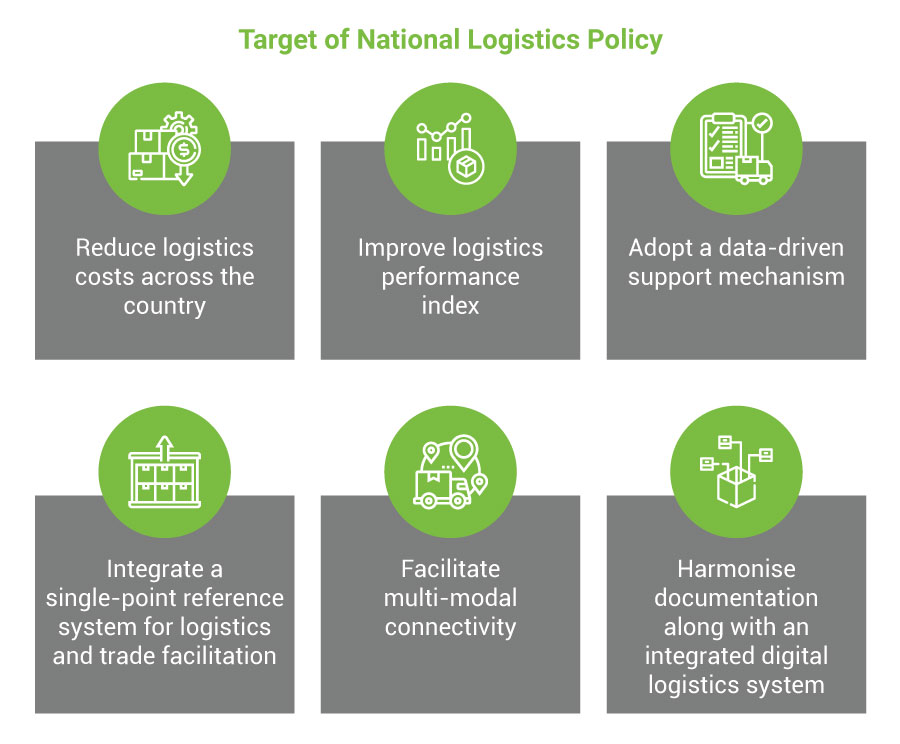Connecting the dots… food loss, farmers’ welfare, broken cold-chain and the launch of the National Logistic Policy

We have heard several times about the shortage of agricultural produce leading to price rises. Interestingly, when there are gaps in the supply chain of agricultural produce, it is most likely connected with production irregularities. Contrarily, this gap is mostly attributed to the discrepancies in the post-production supply chain. The post-production handling of produce, especially horticulture, has specific requirements different from other agricultural produce, requiring a temperature and humidity-controlled environment along with other requisite parameters. There are many fruits and vegetables, each with a specific perishability timeline. However, they have a common feature of generating internal heat through their metabolism. These products are often susceptible to rough handling and disease generation in the timeline process of their journey from the farm-to-fork, making the produce highly vulnerable to non-marketing quality. At the all-India level, the proportions of the produce that farmers cannot sell in the market are estimated as 34 and 44.6 per cent in fruits and vegetables, respectively , as indicated by the committee on Doubling of Farmers’ Income report (Volume III). These losses can be reduced with the development of efficient logistic infrastructure in the form of roads, railways, airways & waterways.
The Indian government recognises the need for developing logistic infrastructure to connect producers to consumers and has made considerable and rapid progress since independence. Regarding agriculture, the government policies and support programmes have transformed itself from a food shortage and import-dependent country to a self-sufficient and export-driven country. More recently, schemes such as the Mission for Integrated Development of Horticulture (MIDH), Pradhan Mantri Kisan Sampada Yojna (PMKSY), Mega Food Park Scheme, Agriculture Infrastructure Fund(AIF), One District One Product(ODOP), Krishi Udan scheme, etc. have further strengthened the support infrastructure for transportation of agri-produce to various parts of the country and abroad. Some other developments, such as the formation of the Doubling Farmers Income (DFI) committee with an emphasis on improving farmers’ income, the announcement of the Kisan rail project, and providing a seamless cold supply chain for perishables through the PPP model, are conceived to have a revolutionary impact in enhancing the logistics infrastructure.
Logistic infrastructure has a multiplier effect on the growth rate of Gross Domestic Product (GDP), as it prepares a platform for continuous and perennial source of income generation for entities dependent on it in the short run, medium run, and long run. In short to medium run, there is employment generation and increased use of input factors of production. While, in the long run, the dependency on the infrastructure for the ease of connectivity promotes future business and personal prospects, there is an additional incentive emerging for Public- Private-Partnership to flourish along the routes. However, there are major hurdles and bottlenecks in the infrastructure connectivity that our country faces today. At times, the government departments announce or sanction projects, but due to the long compliance and lack of proper implementation, they are delayed beyond the target completion dates. The nation also witnesses the lack of coordination among the ministries, departments, or bodies in implementing projects for development in the same region, creating silos. All of these contribute to an increase in the cost of the projects, burdening the exchequer and the government.
The launch of the National Logistics Policy on the 17th of September by the honourable Prime Minister Mr. Narendra Modi would provide a much-needed boost towards the logistic infrastructure development in the country. The policy has been launched alongside the ambitious Gati-Shakti Master plan, which aims to address the seamless movement of people and goods in the country by breaking department silos and ensuring the effective realisation of capital investment in the form of infrastructure development. The experts believe that the Logistics policy will tap and address the missing gaps in the logistics connectivity by complementing the Gati-Shakti Master plan and the Sagarmala and Bharatmala initiatives of the government.

At the launch event, the honourable Prime Minister mentioned in his concluding remarks, “The National Logistics Policy has immense potential for the development of infrastructure, for expansion of business, and increasing employment opportunities. We have to realise these possibilities together,”. He also highlighted that the policy would ensure quick last-mile delivery, end transport-related challenges, save time and money for the manufacturers and prevent wastage of the agro-products. The policy would stimulate and substantiate the performance of other government initiatives like the Production Linked Incentive (PLI) scheme, Make in India, and Aatmanirbhar Bharat Abhiyan, to name a few. This would widen the country’s export potential, making India an emerging manufacturing hub. The provision for the cold chain units and warehousing facilities along the air and rail routes in the policy is expected to address the last mile connectivity of perishable Agri products with ambient environment connectivity.
The policy would be a significant upleap for the agricultural sector, particularly the horticulture sector. The farmers/traders wishing to expand their produce’s marketing opportunities would easily identify and evaluate the presence of road, rail, air, and water connectivity along the transportation route. Also, potential investors would independently ascertain the return on their investments along the supply chain or while developing business opportunities around potential markets/hubs of the horticulture commodities. Efficient market connectivity would help transform semi-urban regional centres into urban areas and strike a balance between the overcrowded urban metro areas, shedding them of enormous pressure and load. With efficient market linkages from farms to the market, the existing Mega Food Parks around the country would also get a boost, leading to the expansion and entry of new hubs and parks around the country. Entities would be incentivised to set up food processing plants in and around the production/harvest regions near the farm gates to reap the optimal cost & time advantage. This would boost the Government of India’s primary focus of promoting Food Processing units in the country. The seamless market linkages would also enable the export potential of various produce, making them competitive in the global market. With so many opportunities opening up, the farmers would be encouraged to increase the production and yield of horticulture crops, enabling them with better price remuneration and an increase in farm income.
This blog is written by Gaurav Agarwal and Dr. Khushboo Gupta




